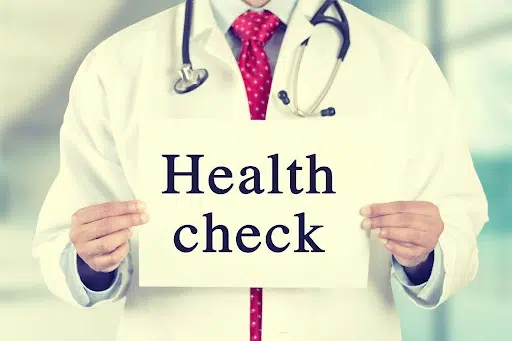A stroke occurs when blood flow to a part of the brain is interrupted or reduced, depriving brain cells of oxygen and nutrients. Within minutes, brain cells begin to die, which is why prompt medical attention is crucial. Strokes are a leading cause of disability and death worldwide, but many cases are preventable with proper care and lifestyle adjustments.
There are three main types of stroke:
- Ischemic Stroke: Caused by a blood clot or other obstruction blocking blood flow to the brain. This is the most common type of stroke.
- Hemorrhagic Stroke: Caused by a ruptured blood vessel in the brain, leading to bleeding.
- Transient Ischemic Attack (TIA): Often called a “mini-stroke,” this involves a temporary blockage that doesn’t cause permanent damage but serves as a warning sign for future strokes.
What Are the Leading Causes of Stroke?
Understanding the risk factors for stroke can help you take preventative measures. The primary causes include:
- High Blood Pressure (Hypertension): The leading risk factor for stroke. Uncontrolled high blood pressure puts excessive strain on blood vessels.
- High Cholesterol: Elevated cholesterol can lead to plaque buildup in arteries, restricting blood flow to the brain.
- Smoking: Smoking damages blood vessels, making clots more likely to form.
- Diabetes: High blood sugar levels can damage blood vessels and increase stroke risk.
- Obesity and Physical Inactivity: Excess weight and a sedentary lifestyle are closely linked to other stroke risk factors like high blood pressure and diabetes.
- Atrial Fibrillation (AFib): An irregular heartbeat that can cause blood clots to form and travel to the brain.
- Unhealthy Diet: Diets high in saturated fats, trans fats, and sodium increase the risk of stroke.
- Excessive Alcohol Consumption: Drinking too much alcohol can lead to high blood pressure and irregular heart rhythms.
For more detailed insights into stroke causes and prevention, visit the American Stroke Association.
What Can I Do to Avoid a Stroke?
Stroke prevention starts with addressing controllable risk factors. Here are practical steps to reduce your risk:
- Manage Blood Pressure: Regularly monitor and maintain a healthy blood pressure level.
- Adopt a Heart-Healthy Diet: Focus on fruits, vegetables, whole grains, lean protein, and healthy fats. The American Stroke Association and the American Heart Association recommend the DASH (Dietary Approaches to Stop Hypertension) diet.
- Stay Physically Active: Aim for at least 150 minutes of moderate-intensity exercise per week.
- Quit Smoking: Seek support to stop smoking, as it dramatically reduces stroke risk.
- Control Blood Sugar Levels: If you have diabetes, work with your healthcare provider to manage your condition effectively.
- Limit Alcohol Intake: Stick to moderate drinking—no more than one drink per day for women and two for men.
- Manage Stress: Chronic stress can raise blood pressure. Practice mindfulness, yoga, or other relaxation techniques.
How Do You Deal with Life After a Stroke?
Recovering from a stroke is a journey that requires physical, emotional, and social adjustments. Here are key aspects of post-stroke care:
- Rehabilitation:
- Stroke rehabilitation may include physical therapy, occupational therapy, and speech therapy to regain lost skills and independence.
- Follow-Up Medical Care:
- Regular check-ups with your healthcare provider to monitor your progress and manage risk factors.
- Emotional Support:
- Many stroke survivors experience depression or anxiety. Counseling and support groups can help you cope. Check out resources from the American Stroke Association for support options.
- Adapting to Changes:
- You may need to make modifications to your home or daily routines to accommodate physical limitations.
- Healthy Lifestyle Choices:
- Continue prioritizing a healthy diet, regular exercise, and medication adherence to prevent future strokes.
Is Stroke Genetic?
While genetics can play a role in stroke risk, lifestyle factors are often more influential. A family history of stroke may increase your likelihood of experiencing one, especially if hereditary conditions like high blood pressure, diabetes, or clotting disorders run in your family. Knowing your family history can help you take proactive steps to reduce your risk.
For more information on genetic and lifestyle risk factors, explore the resources at American Stroke Association.
Tips to Avoid a Stroke
Here’s a quick summary of actionable tips:
- Monitor Your Health: Regular check-ups to track blood pressure, cholesterol, and blood sugar levels.
- Stay Active: Exercise daily to improve cardiovascular health.
- Eat Smart: Avoid processed foods, and focus on whole, nutrient-rich options.
- Avoid Smoking and Excessive Alcohol: Both significantly raise stroke risk.
- Stay Informed: Learn about stroke symptoms (e.g., sudden numbness, confusion, or loss of balance) and act fast by calling 911 if they occur. The quicker you seek medical help, the better the outcomes.
For additional stroke prevention strategies and resources, visit the American Stroke Association.
By taking proactive steps to manage your health and understanding the risks associated with stroke, you can greatly reduce your chances of experiencing one and lead a healthier, more fulfilling life.







